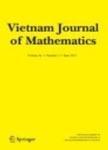版权所有:内蒙古大学图书馆 技术提供:维普资讯• 智图
内蒙古自治区呼和浩特市赛罕区大学西街235号 邮编: 010021

作者机构:Univ British Columbia Dept Comp Sci Vancouver BC V6T 1Z4 Canada Shenzhen Univ Coll Comp Sci & Software Engn Shenzhen 518060 Peoples R China
出 版 物:《VIETNAM JOURNAL OF MATHEMATICS》 (越南数学杂志)
年 卷 期:2018年第46卷第4期
页 面:745-759页
学科分类:07[理学] 0701[理学-数学] 070101[理学-基础数学]
基 金:Canadian Network for Research and Innovation in Machining Technology Natural Sciences and Engineering Research Council of Canada CANRIMT NSERC (5-84306)
主 题:Visual computing Numerical analysis Image processing Elastodynamics Computer graphics
摘 要:Visual computing is a wide area that includes computer graphics and image processing, where the eye-ball norm rules. This paper discusses two case studies involving numerical methods and analysis applied to this wide domain. The focus is on highlighting relative strengths in those intersection areas where there are many problems of interest both to numerical analysts and to researchers in the visual computing community. The first involves motion simulation and calibration of soft objects such as cloth, plants, and skin. The governing elastodynamics PDE system, discretized in space already at the variational level using co-rotated FEM, leads to a large, expensive to assemble, dynamical system in time, where the damped motion may mask highly oscillatory stiffness. Geometric integration and exponential time differencing ideas are making their way into visual computing research these days in search for more quantitative computations that are required for applications such as control and 3D printing. The other case study involves some image processing problems where there is a premium for local approaches that do not necessarily use underlying PDEs. The popular paradigm of solving a data fitting problem with a penalty term involving the gradient or higher derivatives of a function approximating the sought surface is employed in the visual community much less often than in the numerical analysis community. We explain why. Concepts are demonstrated and discussed.